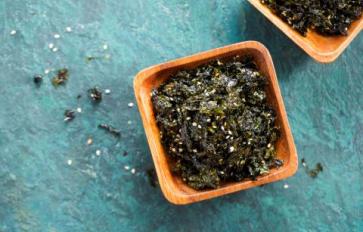
As a person who loves to play outside for extended periods of time, I’ve found it can be discouraging and difficult to do so with dietary restrictions. As a person with multiple allergies, as well as a low FODMAP follower, finding the right food with enough calories to sustain and last throughout my adventures can be a challenge. However, I’ve found that with a little planning, it can become easier than you might think. I’ve listed a few of my favorite tips below.
Pro Tip: Carry light! Every extra pound you have is extra calories you’re burning, and so you’ll want to keep your pack as light as possible.
- For this reason, I try to avoid carrying oatmeal, as it’s a little heavy. I’ve found that cream of buckwheat is a great alternative and is also a little easier on the stomach.
- Dried fruit can sometimes not work well for people on low-FODMAP diets or for people with IBS or IBD. Carrying fresh fruit is certainly not an option, as it will go bad and is also heavy. Try freeze-dried fruits like bananas. They have more calories than berries and reheat well with porridge.
- Finding some portable nut butters can really alleviate weight from plastic or glass containers. For this reason, I try to stick with plastic re-sealable pouches like the ones found here. It’s a larger package so you can cut down on your trash, and they have sunflower seed butter for those of us who are nut-allergic.
- Plan ahead. When in doubt, you can probably make your own allergy-friendly snacks. I’ve added a few recipes below to spark some ideas.
- Research! You’ll be surprised at the options that are out there when you spend a little time researching. There are a few non-dairy alternatives you can bring along, like powdered coconut milk or coconut cream. If you think of something you might want to take with you, look for it! Chances are, you might find it.
- Don’t let allergies or dietary restrictions get in your way. It might take a little more planning, but if you want to do something, do it. It’s hard to remember sometimes, but allergies and restrictions don’t have to take over your life.
Allergy-Free Trail Mix
I like to go to the grocery store and search through the bulk bins to make homemade trail mix (also known as gorp). You can add or subtract ingredients from this list to make it your own.
Base
2 cups pumpkin seeds
1 cup sunflower seeds
1 cup coconut flakes
½ cup cacao nibs
¼ cup chia seeds
1 tsp salt
Add-Ins (put as much or as little of these as you would like!)
Vanilla powder (to taste)
Freeze dried berries, bananas, or other fruit
Chocolate chips
Sun dried tomatoes (cut into pieces)
Directions: add all ingredients together in a large bowl and mix. Divide into one large pouch or a few smaller ones, depending on your preference.
Notes on Dehydrating Food
Dehydrating your own food is a great way to add some variety to your meals. My personal favorite is to cook cream of buckwheat, dehydrated spinach, and dehydrated carrots together. It may sound a bit odd, but it’s a nice savory porridge and a great way to get some vegetables while on the trail.
I strongly suggest investing in a dehydrator, as it allows for a little more consistency and less trial-and-error than dehydrating food in an oven. However, if you are using an oven, cut your vegetables into ¼ inch pieces and be careful not to overlap them. Turn the oven to 120° F, or as low as it can go, and dehydrate until finished, about 7-8 hours. You might need to tweak the timing a little, depending on your oven and what you’re dehydrating, but once you get the hang of it, dehydrating food can be very helpful.
Happy trails!
Disclaimer: Neither the author nor Basmati.com has any financial affiliation with the brands/products mentioned here.




